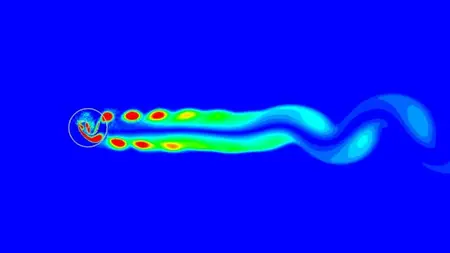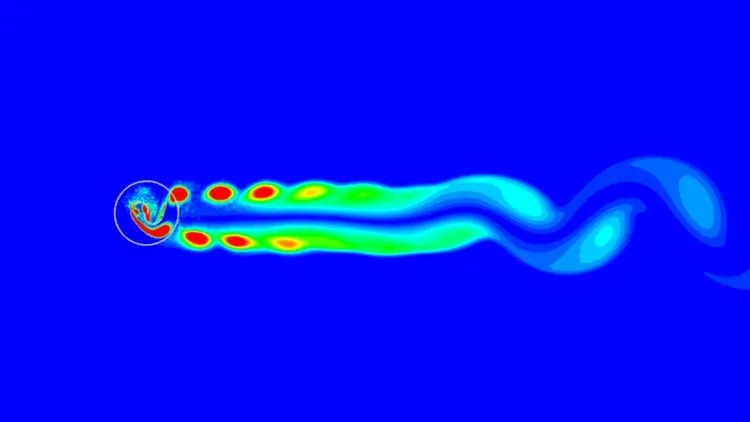Savonius wind turbine CFD analysis and validation
Last updated 8/2025
Duration: 2h 10m | .MP4 1280x720 30 fps(r) | AAC, 44100 Hz, 2ch | 1.22 GB
Genre: eLearning | Language: English
Last updated 8/2025
Duration: 2h 10m | .MP4 1280x720 30 fps(r) | AAC, 44100 Hz, 2ch | 1.22 GB
Genre: eLearning | Language: English
Learn CFD from scratch by modeling, meshing, simulating, and validating Savonius wind turbines using ANSYS Fluent with r
What you'll learn
- Understand the basics of wind energy and the working principle of Savonius vertical-axis wind turbines
- Create accurate 2D geometry and apply high-quality meshing techniques in ANSYS, including quad elements, inflation layers, and wake region refinement
- Set up transient simulations for rotating machinery using the sliding mesh approach in ANSYS Fluent
- Capture aerodynamic behavior and performance of Savonius turbines under low-speed wind conditions
- Validate CFD results using real experimental data from Blackwell et al. (1977), ensuring credible simulation outcomes
Requirements
- A basic understanding of fluid mechanics and CFD concepts is recommended. Prior exposure to ANSYS Workbench tools like DesignModeler, Meshing, and Fluent will be helpful but is not mandatory — step-by-step guidance is provided.
Description
This course provides a complete, hands-on guide to performing2D CFD analysis and validationof aSavonius vertical-axis wind turbine (VAWT)usingANSYS DesignModeler,ANSYS Meshing, andANSYS Fluent.
We start with a brief introduction torenewable energy, the role ofwind power, and a comparison betweenhorizontalandvertical-axis wind turbines. You’ll then explore the working principles and applications of theSavonius turbine, which is especially effective inlow wind speed regions.
The course then takes you through a fullCFD workflow, from creating geometry to generating a high-quality mesh, setting up and solving the simulation, and validating your results usingreal experimental data.
You’ll use:
Unstructured quad meshingwithinflation layersfor boundary layer resolution
Body of Influence (BoI)for capturing thewake regionaccurately
Sliding mesh methodinANSYS Fluentfor simulating the rotor’s motion in a transient flow field
Finally, your simulation results will bevalidated against wind tunnel datafrom the classic study:
Blackwell et al., “Wind Tunnel Performance Data for Two and Three-Bucket Savonius Rotors”, SAND76-0131, 1977 — Test Run 21, Configuration No. 9 (Pages 25 & 46)
This ensures that your CFD model is not just theoretical butmatches real-world performance— a critical step in engineering design, research, and reporting.
What You’ll Learn
Basics of renewable energy and wind turbine types
Working of Savonius vertical-axis wind turbines
Creating accurate 2D turbine geometry inANSYS DesignModeler
Meshing withquad elements,inflation layers, andBoI for wake capture
Setting up transient CFD simulation usingsliding mesh
Usingk-ω SST turbulence modelfor reliable wake prediction
Torque and power coefficient extraction and plotting
Post-processing using contours, streamlines, and animations
Validating simulation resultsusing benchmark data from Blackwell et al.
Who This Course Is For
Engineering students and researchers interested in wind energy or CFD
Final-year students working on thesis or design projects
Professionals working with rotating machinery or renewable energy systems
Anyone wanting a structured, validated CFD project from start to finish
By the end of this course, you will have built, simulated, and validated a complete 2D CFD model of a Savonius wind turbine — with skills directly applicable to research, academic publishing, or professional CFD work.
Who this course is for:
- Engineering students, researchers, and professionals in mechanical, aerospace, or renewable energy fields who are interested in simulating and validating wind turbine performance using transient CFD techniques in ANSYS Fluent.
More Info



